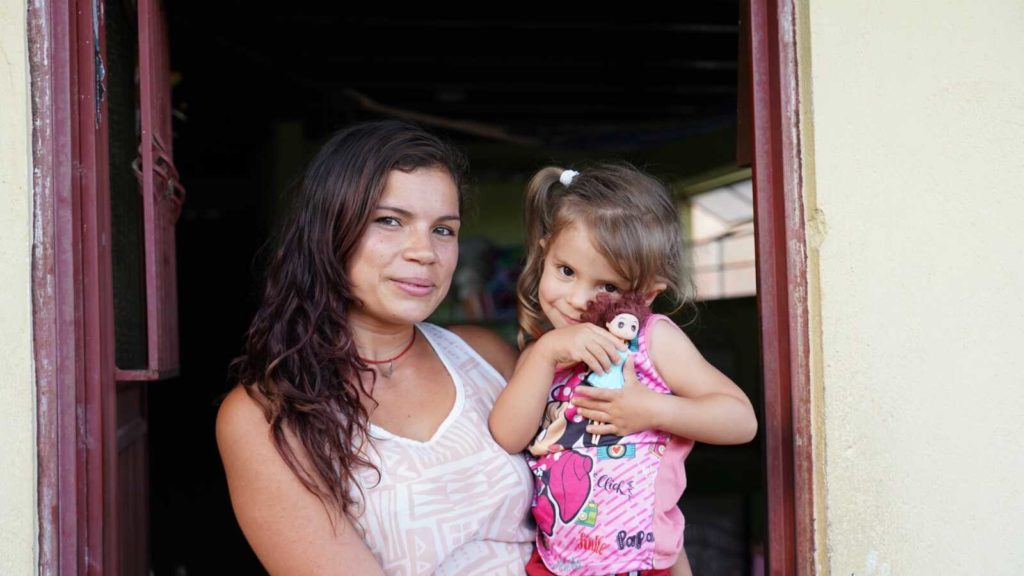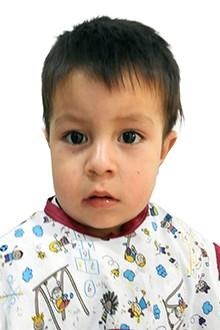If you sponsor — or are thinking about sponsoring — a child in Colombia, here are some facts to help you learn about this culturally rich country now emerging from decades of war and violence.
Colombia, officially Republic of Colombia, is a country in northwestern South America bordered by Panama on the northwest, Venezuela and Brazil to the east, and Peru and Ecuador to the south. Due to its diverse ecosystems, Colombia is the second most biodiverse country in the world and the MOST biodiverse country when it comes to birds.
More than twice the size of France, Colombia is the second most populous nation in South America, behind Brazil. Colombians primarily reside in the cities that lie along the country’s mountainous interior, including the capital city of Bogotá, which sits on a high plateau within the Andes Mountains.
Despite the many hardships and decades of war that Colombia has endured, Colombians are known for their rumbero spirit — the ability to enjoy life even under difficult circumstances.
The country’s cultural heritage holds strong ties to its history as a Spanish colony and it is often considered the most Roman Catholic country in South America – with Easter and Christmas among the most important and celebrated holidays.
Colombians take pride in their rich, diverse culture, with a strong national tradition in arts and literature. In 1982, the Nobel Prize for Literature was awarded to Colombian author Gabriel García Márquez, and Colombians often point to the fact that more poets than soldiers have served as the country’s president as an emblem of their strong literary culture.
Despite the many hardships and decades of war that Colombia has endured, Colombians are known for their rumbero spirit — the ability to enjoy life even under difficult circumstances.

Holt’s Work in Colombia
Holt began serving children and families in Colombia in 1984, but left the region two years later due to ongoing political instability — an issue that has, in part, resulted from the country’s enduring struggle with income equality, which despite a fast growing economy is among the worst the world. In 2017, Holt began exploring how we might once again help children and families in the country. After five decades of war, Colombia had just begun to emerge from a dark and brutal period in its history. The year before, in 2016, the local government signed a peace treaty with the largest guerrilla group in Colombia, the FARC, bringing an official end to more than five decades of an ideological civil war between the Colombian government, communist militants and paramilitary groups — groups that as the war went on became increasingly engaged in, and funded by, drug trafficking.
Out of survival, many people in Colombia got caught up in the crime and violence that drug cartels and guerrilla fighters brought to their communities during the war — creating a cycle of neglect and abuse in families, and causing thousands of children to become separated from their parents. When Holt began exploring how we might help children and families in Colombia, we acted in response to a request from the Colombian government. They needed help finding loving families for children who had lost or become permanently separated from their birth families, and hoped we would re-establish an adoption program in Colombia.
Immediately, we responded to this need — and once established with local partners, began seeking families for children. Holt also began working alongside our partners to help reunite children with their birth families, whenever possible, and to strengthen families at risk of separation.
In Colombia, over a third of all people live in poverty and many communities are working to escape a generational cycle of crime and violence perpetuated by war and instability. The country’s illicit drug trade, primarily in cocaine, also continues to be an issue affecting Colombian life. But Colombians are incredibly resilient. And today, with the support of sponsors and donors, many families have begun to heal and to seek a happier, more hopeful future for their children.
Every year, sponsors and donors provide life-changing support for over 800 children and families in Colombia.

Basic Facts About Colombia
Capital: Bogotá
Population: 53.4 million people (est.)
Official Language: Spanish
Area: 1,138,910 sq km, slightly less than twice the size of Texas
Climate: tropical along coast and eastern plains; cooler in highlands
Religion: Christian 82%, predominantly Roman Catholic (2023 est.)
Ethnic Groups: Mestizo and White 87.6%, Afro-Colombian 6.8%, Amerindian 4.3%, unspecified 1.4% (2018 est.)
Type of Government: presidential republic
National Celebrations
New Year’s
New Year’s is surrounded by many superstitions, or agüeros. On New Year’s Eve, people may put lentils in their pockets to bring abundance. And at midnight, people drink champagne and eat 12 grapes for each month — bringing good fortune in the new year. A common rural custom involves predicting the new year’s weather around the first 12 days of January. For example, if January 1 is overcast, the prediction will be for the whole month of January to be overcast, too!
Easter
Easter is one of the most important holiday seasons in Colombia — beginning with Ash Wednesday 40 days before Easter when people attend Mass and a priest draws a cross of ashes on their forehead. Between Ash Wednesday and Easter is a time called cuaresma; when people pray often and abstain from eating red meat and drinking alcohol, especially on Fridays. During Semana Santa (Holy Week), massive processions of people carry reeds and statues of saints through the city on their way to church. Sunday, the day honoring the Resurrection, is sacred to Catholics in Colombia. Today, many Colombians forgo religious observations during Holy Week and instead spend the time with family.
Christmas
Christmas is another important time of year, with lots of colorful lights, Christmas trees and pesebres (nativity scenes) decorating people’s homes. On the nine nights before Christmas, called la novena, family and friends gather for big celebrations that include traditional Christmas prayers, carol singing and customary Christmas snacks such as natilla (similar to flan) and buñuelos (fried dough balls). On Christmas Eve, families pray around the pesebre and exchange presents. Children receive gifts from either Baby Jesus or Papá Noel (Santa Claus), or both.
Festivals
Colombia also holds several annual festivals, including the Feria de Manizales and the Feria de Cali, which take place during December or January. The largest festival, Carnaval de Barranquilla, is celebrated on the Caribbean coast with parades and processions that include both Catholic saints and Indigenous or Afro-Caribbean figures. It falls every year on a week in February (just before Ash Wednesday). And Carnival — one of the largest in Latin America — draws visitors from across Colombia and all over the world.
Colombian Food and Drink
Although they vary by region, popular dishes in Colombia include fried dough balls called buñuelos, changua (potato-and-egg soup), ajiaco (a rich soup made with chicken, potato and corn, with cream and capers added at the table), and caldo de papa (potato broth with cilantro and onions).
Other popular foods include empanadas (meat turnovers), arroz con pollo (chicken with rice), frijoles con chicharrón (pork and beans), and sancocho (stew with chicken, fish, or meat and vegetables). Sweets include arequipe (caramel sauce) — often served between wafers with other toppings — and guava jelly is a popular sweet typically eaten with cheese.

Social Concerns
A History of Violence
Despite the FARC peace deal, violence and drug trafficking remain among Colombia’s greatest social concerns. The rebel group ELN continues to inflict violence on the population, and though the FARC has officially become a political party, hundreds of dissident members remain.
Many families in Colombia are also working to escape a generational cycle of violence.According to a survey conducted in 2019 by the Government of Colombia with support from the U.S. Centers for Disease Control and Prevention (CDC), 41 percent of girls and 42 percent of boys in Colombia had experienced some type of violence in childhood.
Most of the children who sponsors and donors support in Colombia are too young to have directly experienced the worst of Colombia’s decades-long civil war. But many of their parents got caught up in the violence and crime that so many people of that era resorted to just to survive. It became a way of life, and it hardened many of them — creating a cycle of neglect and abuse in families.
Through our local partner, FANA, parents and caregivers learn non-violent conflict resolution skills and parenting strategies to raise their children in healthy, positive ways. Some participants in the program are already separated from their children and engaged in the process of reuniting with them. Others are at high risk of experiencing and/or engaging in domestic violence, abuse and neglect. The program includes a cycle of workshops, each with a specific theme. These themes include improving self-esteem and wellbeing of parents and children, increasing positive relationships, providing tools to manage emotions and everyday conflicts, and developing positive parenting and discipline strategies.
Learn more about how sponsors and donors help strengthen families at risk of separation in Colombia.
Early Childhood Care & Development
Once children reach grade-school age in Colombia, public education is free. But in the communities where sponsors and donors support families, few parents can afford preschool and many struggle to find safe childcare for children under age 5. Many of the parents in Holt’s partner programs dropped out of school early and, without an education, they have no choice but to take informal, low-paying positions in factories or farms. Even in two-parent households, both parents must work long hours or multiple jobs to pay for food and rent — leaving no one home to care for their children, and making their children vulnerable to exploitation or dangerous conditions if they bring them to work.

Through our local partner FANA, sponsors and donors help provide safe daycare for children under age 5 while their parents work during the day. Through the FANA daycare program, these children receive nourishing meals, a critical early childhood education, enriching experiences like music, art and PE classes, and the nurturing care of trained caregivers — helping them acquire the skills needed for healthy social, emotional, physical and cognitive development. With the support of sponsors and donors, children with special medical or developmental needs also receive speech, occupational or physical therapies. At daycare, children also receive individualized counseling as well as experiential learning opportunities to help them overcome challenges, cope with trauma and grow to their fullest potential.
Read more about early childhood care and education in Colombia.

Learn more about Holt’s work in Colombia!
See how sponsors and donors create a brighter, more hopeful future for children and families in Colombia!





